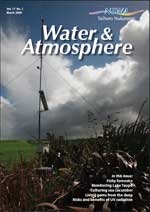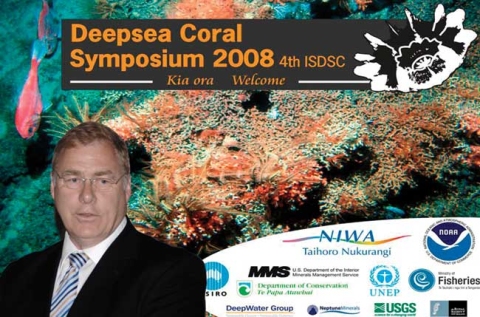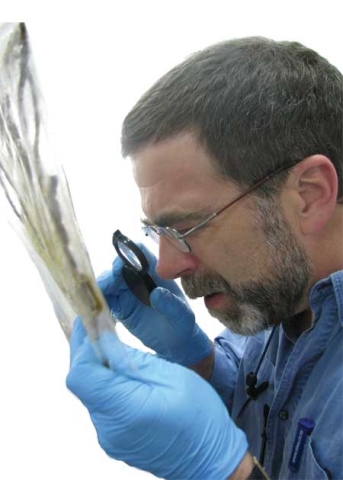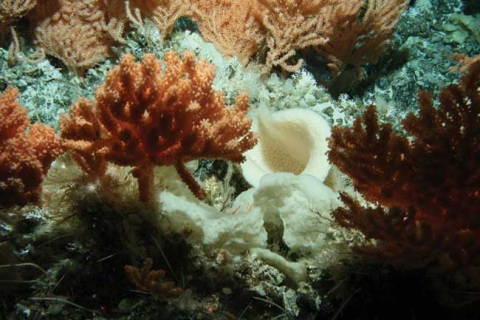PDF of this article (130 KB)


Corals rise from the deep: Fourth International Deepsea Coral Symposium
The world’s premier conference on the science and management of deepsea corals and coral ecosystems drew about 200 scientists, resource managers, students, and policy-makers from 29 countries to Wellington in December. For four days they discussed the critical factors for researching and conserving deepsea corals. This is the first time the symposium, which convenes every three years, has been held in the Southern Hemisphere.
More than two thirds of all known coral species come from deep, cold-water oceans. In the New Zealand region, deepsea cold-water corals grow abundantly in waters greater than 200 m. Understanding the ecosystem role, function, and value of deepsea corals and associated fauna has become a priority for many national governments and international regional resource bodies, to ensure precautionary management and protection. In New Zealand, black coral and red hydrocoral Errina are currently protected.
The symposium covered a range of coral research topics, including:
- coral ecosystems and biodiversity
- climate change and ocean acidification
- management decisions and policy for corals
- human impacts on coral habitat.
Dr Wayne Mapp, Minister of Research, Science and Technology, opened the symposium, which was hosted and sponsored by NIWA. Other major sponsors included Ministry of Fisheries, Department of Conservation, NOAA (National Oceanic and Atmospheric Association, USA), and CSIRO (Australian Commonwealth Scientific and Industrial Research Organisation).
Deepsea corals are at risk from ocean acidification and are likely to be one of the first ecosystems affected. A workshop on research priorities of ocean acidification and deepsea corals was held during the symposium, along with a meeting of TRACES, the Trans-Atlantic Coral Ecosystem Study.
During the symposium, Te Papa and NIWA launched ‘Corals – hidden beauties of the deep’, a display of deepsea corals owned by Te Papa, NIWA, Ministry of Fisheries, and the Department of Conservation. More than 1100 described species of deepsea corals occur within New Zealand’s marine realm. Forty species of coral, along with video footage captured by DTIS, NIWA’s deeptowed imaging system, are on display through 2009, showing the diversity of these unique beauties that can be found in New Zealand waters.
For further information, contact:
World experts in coral taxonomy congregate


Several of the taxonomic experts visiting New Zealand for the Deepsea Coral Symposium participated in a coral identification workshop at NIWA. They presented a series of seminars and answered queries on specimen identification.
Forty-five scientists from NIWA, Victoria University, and overseas institutes attended the workshop, which targeted the characteristics that distinguish New Zealand coral fauna and helped participants improve their skill in identifying corals.
The experts took every opportunity to work in the NIWA Invertebrate Collection (NIC), examining specimens and confirming or providing identifications of the growing number of corals in the collection. Highlights were discoveries of an undescribed new genus and a number of new species! The visitors commended the NIC as one of the world’s best collections of deepsea corals. It comprises specimens owned by NIWA and also those held in stewardship by NIWA for Ministry of Fisheries and Department of Conservation.
The visiting experts were Steve Cairns (Smithsonian Institution), Dennis Opresko (Oak Ridge National Laboratory), Tina Molodtsova (P.P. Shirshov Institute of Oceanology, Russia), Juan Sanchez (Universidad de los Andes, Colombia), Les Watling (University of Hawaii), Scott France (University of Louisiana at Lafayette), and Asako Matsumoto (University of Tokyo). Several of them have previously come to NIWA as visiting scientists.



